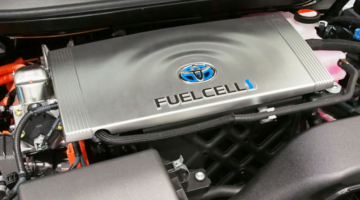
The Green Room: What happens when you put two energy experts in a room and ask them all about electric cars? This week we’re going through the many different kinds of electric vehicles, with all of their pros and cons. From Tesla to Toyota, from hybrids to hydrogen cells, we take you through everything you need to know about electric vehicles; how they work, and which type is right for you.
WHAT ARE THE DIFFERENT TYPES OF ELECTRIC VEHICLE?
Battery Electric Cars (BEV)
The pure electric car, with rechargeable batteries and no gas engine. Some examples are the Nissan leaf, and Tesla X.
“Standard” Hybrid Electric Cars (HEV)
Composed of two engines – a conventional combustion engine with an electric propulsion system. These kinds of hybrids don’t plug in, the electric component comes from regenerative braking. Examples include the Toyota Prius Hybrid and the Honda Civic Hybrid.
Plug-in Hybrid Electric Vehicle (PHEV)
PHEVs are hybrids that can recharge the battery through both regenerative braking and plugging into an external source of electrical power. The Chevy Volt and Fiat 500e are both PHEV’s.
Extended Range Electric Cars (E-REV)
Very similar to PHEVs, but rather than using both engine types to power the vehicle, E-REVs rely exclusively on the electric propulsion system. The electric motor always drives the wheels, with the internal combustion engine acting as a generator to recharge the battery when it is depleted. Examples of E-REVs include the Vauxhall Ampera and Chevrolet Volt.
Fuel Cell Electric Vehicle (FCEV)
Completely different to all the cars above, but definitely worth discussing. FCEVs are powered by an electric motor, which is charged-up by combining hydrogen and oxygen to create a chemical reaction. There are only 3 available on the UK market, and they are the Hyundai’s ix35, the Toyota Mirai and the Honda FCV Clarity.
Read more:
- Choosing the Right Type of Electric Car
- Electric car FAQs
- A Beginners Guide to Fuel Cells
- 5 Reasons to Install an EV Home Charging Point
Think we missed something? Do you have a different opinion?
Comment below to get your voice heard…












No Comments yet! Be the first one.